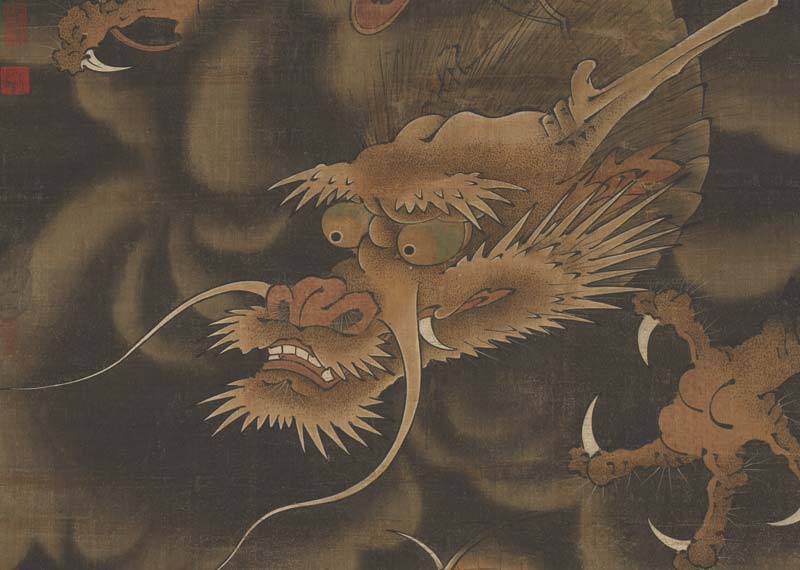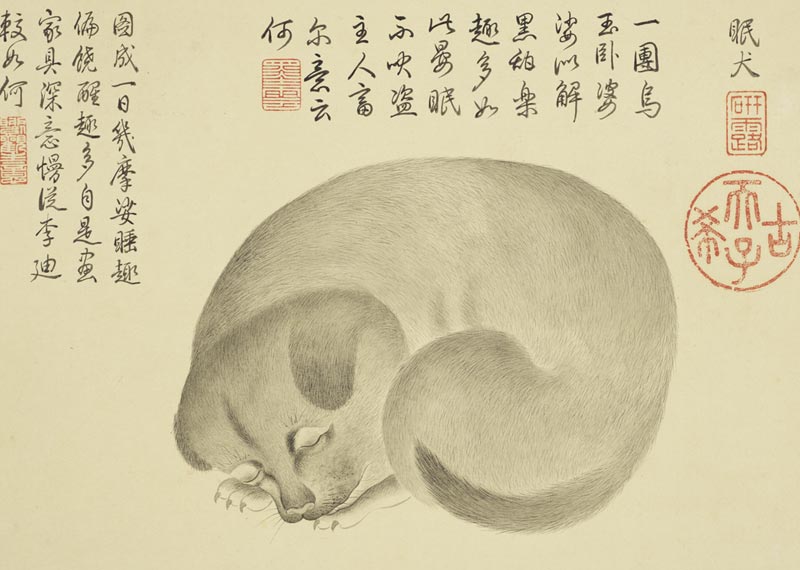Animals of the Chinese Zodiac
The Chinese zodiac is one of the most common parts of folk culture in not only Chinese circles but also in different parts of Asia. People believe that many of their habits are closely related to the attributes of the zodiac animal for the year in which they were born. Legend has it that the Jade Emperor held a special contest of the zodiac animals to help people remember the year of their birth. The animals were ranked in the order of their placement in the race and so assigned to one of the twelve years in the cycle. The rat, cat, and ox are the main characters of one particular story related to this legend. The rat, unable to awaken a sleeping cat, chose an ox as its partner instead. Just before crossing the finish line in the lead, however, the rat jumped off the ox’s back and came in first, much to the anger of the cat, who became its enemy. In this part of the exhibit, paintings of animals from the Chinese zodiac have been selected (along with the adorable cat) in monochrome ink as well as colors. These works from antiquity up to modern times offer you an opportunity to appreciate the beauty of Chinese art and even find the one that corresponds to your own zodiac animal!
-
 Beneficent RainAnonymous, Song dynasty (960-1279)
Beneficent RainAnonymous, Song dynasty (960-1279)In the middle of this painting is a dragon with four bright claws on each foot. It coils among the dark clouds gathered in the sky and gazes downwards at the smaller aquatic dragon in the lower left corner. The body of this four-clawed dragon writhes dramatically, the details of its body decorated with fine white strokes to indicate bristles, clearly defining it as a truly rare and precious beast.
Traditionally, imagery of the dragon has many different meanings. Not only can it symbolize the emperor and the ruling family, it is also a symbol of good luck. In many ancient texts, the dragon is said to be the mount upon which the god of water rides. It was later elevated to become a god in charge of rain and seawater. In the famous novel, Journey to the West, the dragon king lives in a palace deep under the water, in charge of all matters related to the seas. -
 Sleeping DogJin Tingbiao (?-1767), Qing dynasty
Sleeping DogJin Tingbiao (?-1767), Qing dynastyJin Tingbiao was a court artist during the Qing dynasty who specialized in painting figures, landscapes, and flowers. The Qianlong emperor much appreciated his skill in painting. This is a work in monochrome ink of a sleeping dog curled into a ball and fast asleep in an extremely adorable pose. Using varied shades of light and dark ink, the artist has accurately depicted the appearance of the ears, chin, and tail of this sleeping dog. Even the delicate details of the fur are clearly seen. Despite the small size of the painting, it nonetheless fully conveys the marvelous skills of the artist. The Qianlong emperor even strongly praised it in his inscriptions written at the top of the work, claiming the depiction is even more beautiful than the renderings of the famous Song dynasty painter Li Di active in the twelfth century.